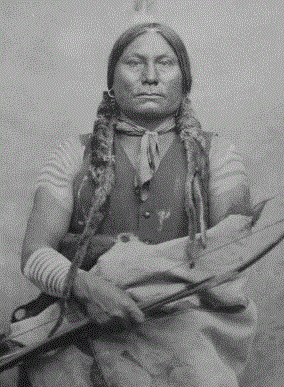Reservation Era Begins 1850-1878
1876
Battle of Greasy Grass (Battle of Little Bighorn)

Red Cloud had asked the U.S. government to enforce the treaty and protect the Black Hills from the Gold Rush. The White miners had asked the U.S. government to evict the Lakota from their own lands. U.S. President Grant says that all Lakota bands must come to their assigned agencies by January 31, 1876, or they will be considered hostile and subject to being killed. The Lakota bands organize a massive encampment along the Little Bighorn River in Montana and 7,000 Lakota, Yankton, Santee, Northern Arapaho, and Northern Cheyenne camp along the riverbanks. Crazy Horse, along with 1,000 Lakota, stop the first U.S. troops, and Sitting Bull and his warriors stop Custer. Custer is killed, along with 211 soldiers of the Seventh Cavalry. Eventually, U.S. troops cut off supplies and by winter, facing starvation, the bands eventually go to the reservations in the Dakotas. In retaliation for the deaths of the U.S. troops, Congress takes back the Black Hills, despite the Fort Laramie Treaty, and takes another forty million acres of Lakota land as well. (https://www.pbs.org/weta/thewest/program/episodes/six/goodday.htm)